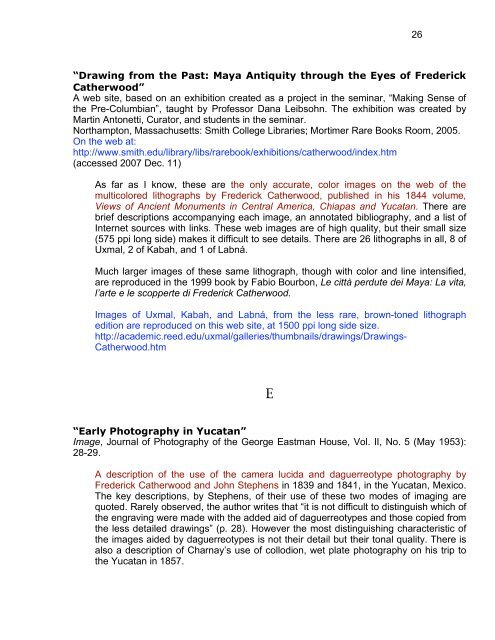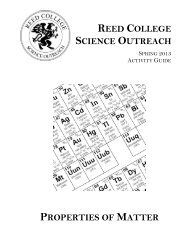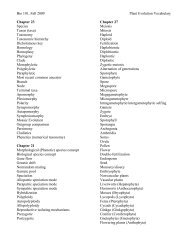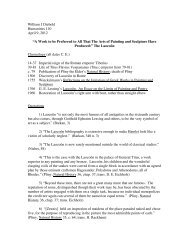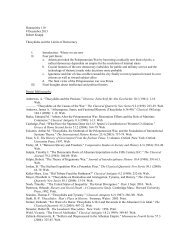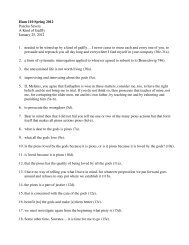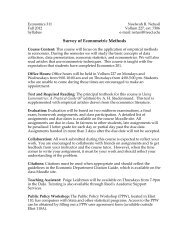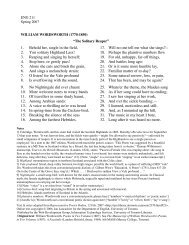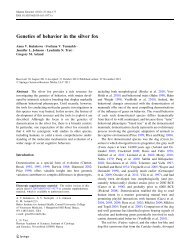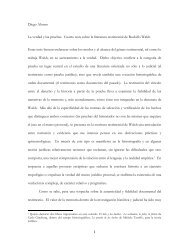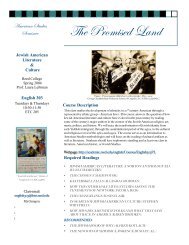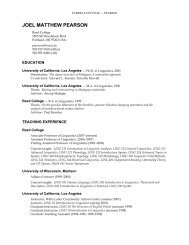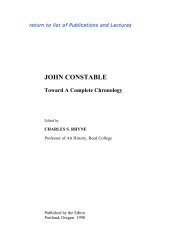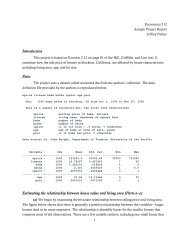Graphic and Photographic Documentation - Reed College
Graphic and Photographic Documentation - Reed College
Graphic and Photographic Documentation - Reed College
You also want an ePaper? Increase the reach of your titles
YUMPU automatically turns print PDFs into web optimized ePapers that Google loves.
“Drawing from the Past: Maya Antiquity through the Eyes of Frederick<br />
Catherwood”<br />
A web site, based on an exhibition created as a project in the seminar, “Making Sense of<br />
the Pre-Columbian”, taught by Professor Dana Leibsohn. The exhibition was created by<br />
Martin Antonetti, Curator, <strong>and</strong> students in the seminar.<br />
Northampton, Massachusetts: Smith <strong>College</strong> Libraries; Mortimer Rare Books Room, 2005.<br />
On the web at:<br />
http://www.smith.edu/library/libs/rarebook/exhibitions/catherwood/index.htm<br />
(accessed 2007 Dec. 11)<br />
As far as I know, these are the only accurate, color images on the web of the<br />
multicolored lithographs by Frederick Catherwood, published in his 1844 volume,<br />
Views of Ancient Monuments in Central America, Chiapas <strong>and</strong> Yucatan. There are<br />
brief descriptions accompanying each image, an annotated bibliography, <strong>and</strong> a list of<br />
Internet sources with links. These web images are of high quality, but their small size<br />
(575 ppi long side) makes it difficult to see details. There are 26 lithographs in all, 8 of<br />
Uxmal, 2 of Kabah, <strong>and</strong> 1 of Labná.<br />
Much larger images of these same lithograph, though with color <strong>and</strong> line intensified,<br />
are reproduced in the 1999 book by Fabio Bourbon, Le città perdute dei Maya: La vita,<br />
l’arte e le scopperte di Frederick Catherwood.<br />
Images of Uxmal, Kabah, <strong>and</strong> Labná, from the less rare, brown-toned lithograph<br />
edition are reproduced on this web site, at 1500 ppi long side size.<br />
http://academic.reed.edu/uxmal/galleries/thumbnails/drawings/Drawings-<br />
Catherwood.htm<br />
E<br />
“Early Photography in Yucatan”<br />
Image, Journal of Photography of the George Eastman House, Vol. II, No. 5 (May 1953):<br />
28-29.<br />
A description of the use of the camera lucida <strong>and</strong> daguerreotype photography by<br />
Frederick Catherwood <strong>and</strong> John Stephens in 1839 <strong>and</strong> 1841, in the Yucatan, Mexico.<br />
The key descriptions, by Stephens, of their use of these two modes of imaging are<br />
quoted. Rarely observed, the author writes that “it is not difficult to distinguish which of<br />
the engraving were made with the added aid of daguerreotypes <strong>and</strong> those copied from<br />
the less detailed drawings” (p. 28). However the most distinguishing characteristic of<br />
the images aided by daguerreotypes is not their detail but their tonal quality. There is<br />
also a description of Charnay’s use of collodion, wet plate photography on his trip to<br />
the Yucatan in 1857.<br />
26


